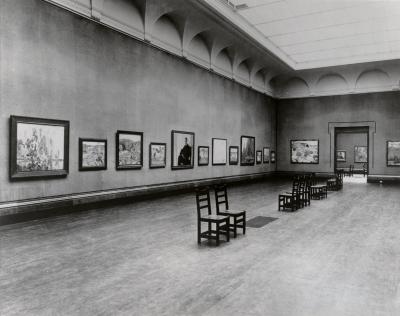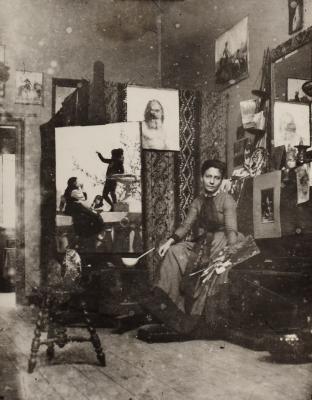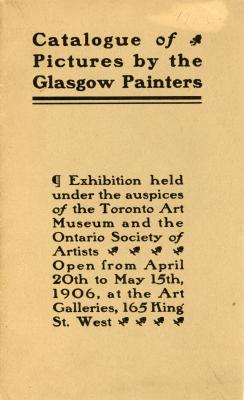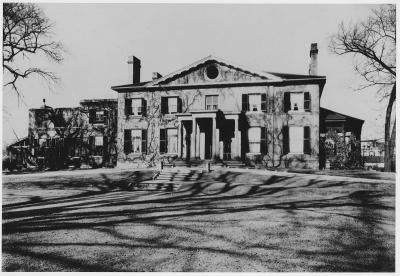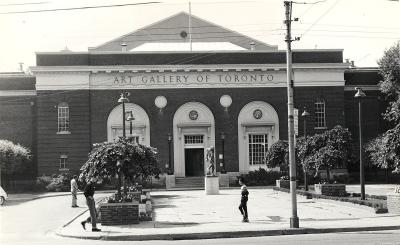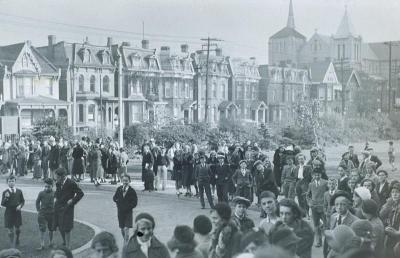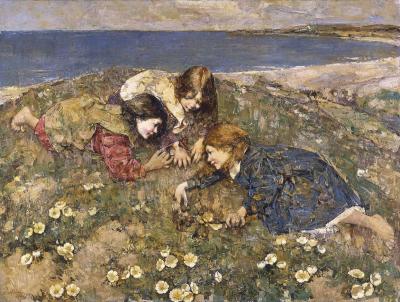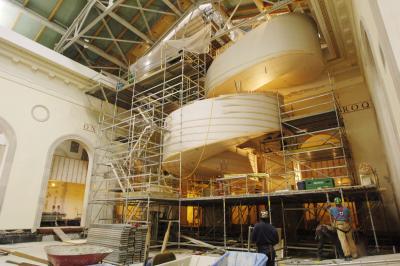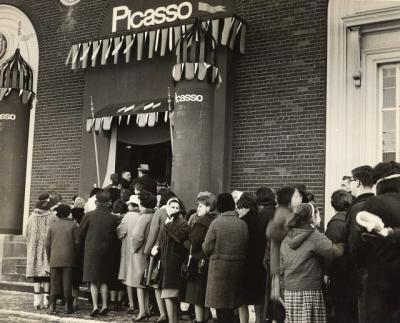AGO 125: A Timeline of AGO History
A lot can happen in 125 years. How much do you know about AGO history?
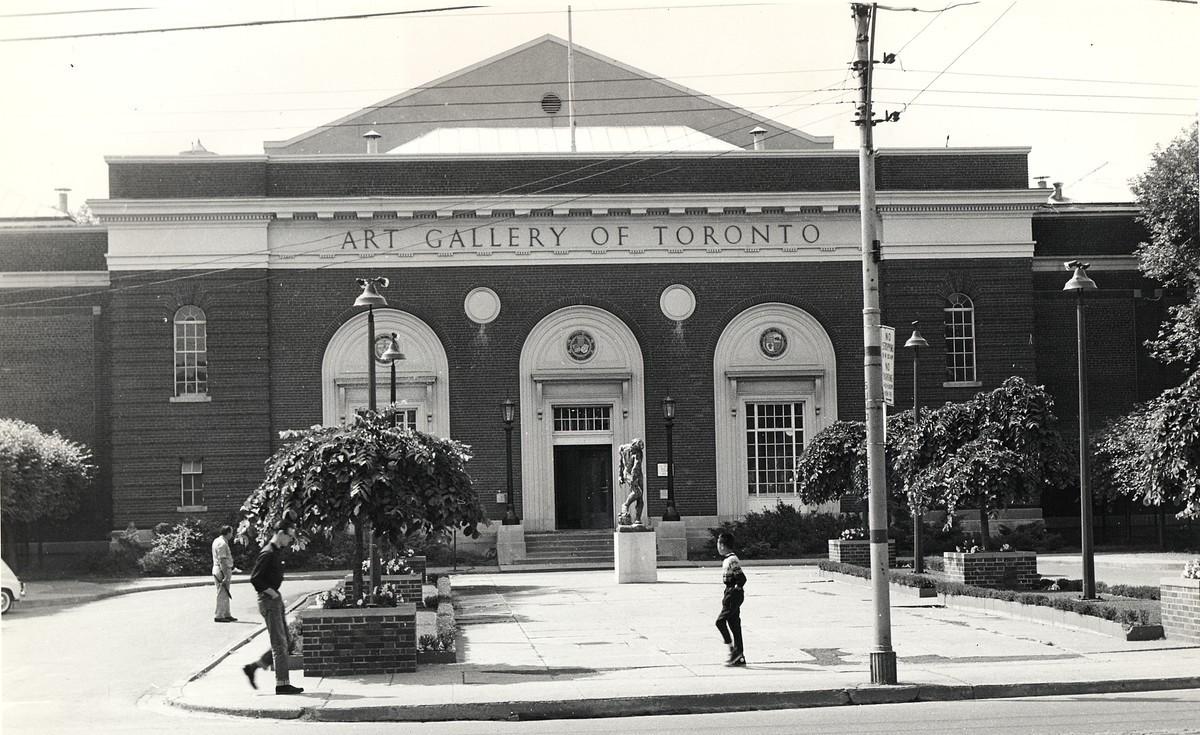
Front facade of the Art Gallery of Toronto, c. 1950s. Photo © AGO.
Foyer continues to highlight key moments in the Gallery’s history to commemorate its 125th anniversary.
From a 25-cent admission fee and a few name changes to ever-expanding gallery spaces and crowdfunded acquisitions, a lot has changed at the AGO over the past 125 years. A timeline charting the history of the Gallery from 1900 to the present is available now on the AGO website.
Test your knowledge of early AGO history with these highlights below and explore the timeline at ago.ca/125 to learn more. Also, dive into the Iconic 125, a curated list of AGO artworks, collections, and architectural feats. There are 30 AGO 125 labels throughout the Gallery that offer insights into the artworks on the list.

First Art Gallery of Ontario logo, 1966
What’s In a Name?
Did you know that the Art Gallery of Ontario (AGO) wasn’t always called the AGO?
In fact, it was named the Art Museum of Toronto when it was founded on July 4, 1900. By 1919, the Art Museum of Toronto officially changed its name to the Art Gallery of Toronto. At the time, admission to the Gallery was just 25 cents. In 1966, the Art Gallery of Toronto officially became the Art Gallery of Ontario, marking a new chapter in its history and reflecting its growing provincial significance.
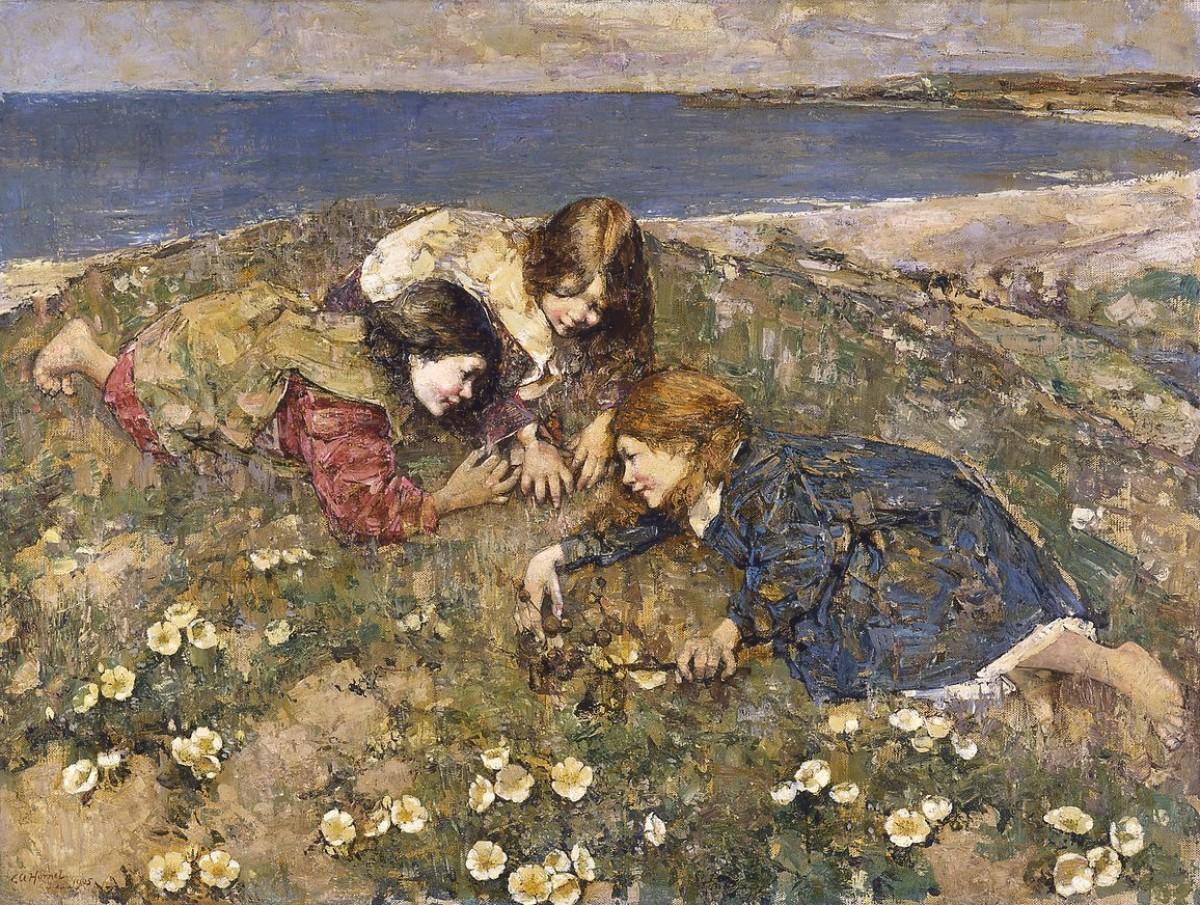
Edward Atkinson Hornel. The Captive Butterfly, 1905. oil on canvas, Overall: 76.2 x 102.2 cm. Art Gallery of Ontario. Gift by Subscription, 1906. Photo © AGO. 402
The AGO’s First Artwork Purchase Was a Painting
Titled The Captive Butterfly (1905) by Edward Atkinson Hornel, this 1906 purchase was funded by 31 private subscribers who paid $610 for the painting, equivalent to about $22,000 today. Now in 2025, the painting is on view on Level 2 for the first time in years.
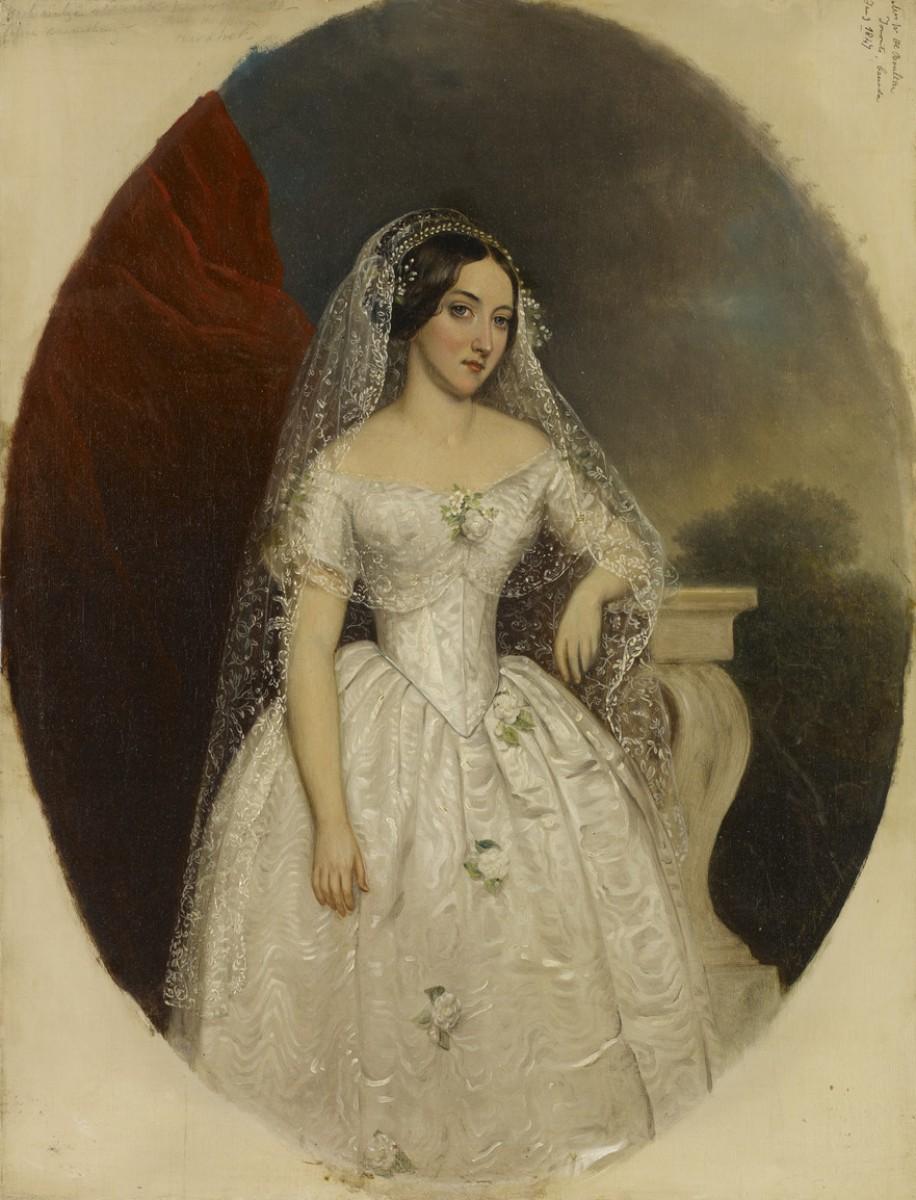
George Theodore Berthon. Portrait of Mrs. William Henry Boulton (Harriet), 1846. oil on canvas, Overall: 59.1 x 44.5 cm. Art Gallery of Ontario. Goldwin Smith Collection, Bequest of 1911. Photo © AGO. GS49
It All Started With a Gift
In 1910, Harriet Boulton Smith generously bequeathed The Grange to serve as the first home of the Art Museum of Toronto. Built in 1817, the Grange is a national historic site, one of Toronto’s oldest brick residences, and home to the Norma Ridley Members’ Lounge.
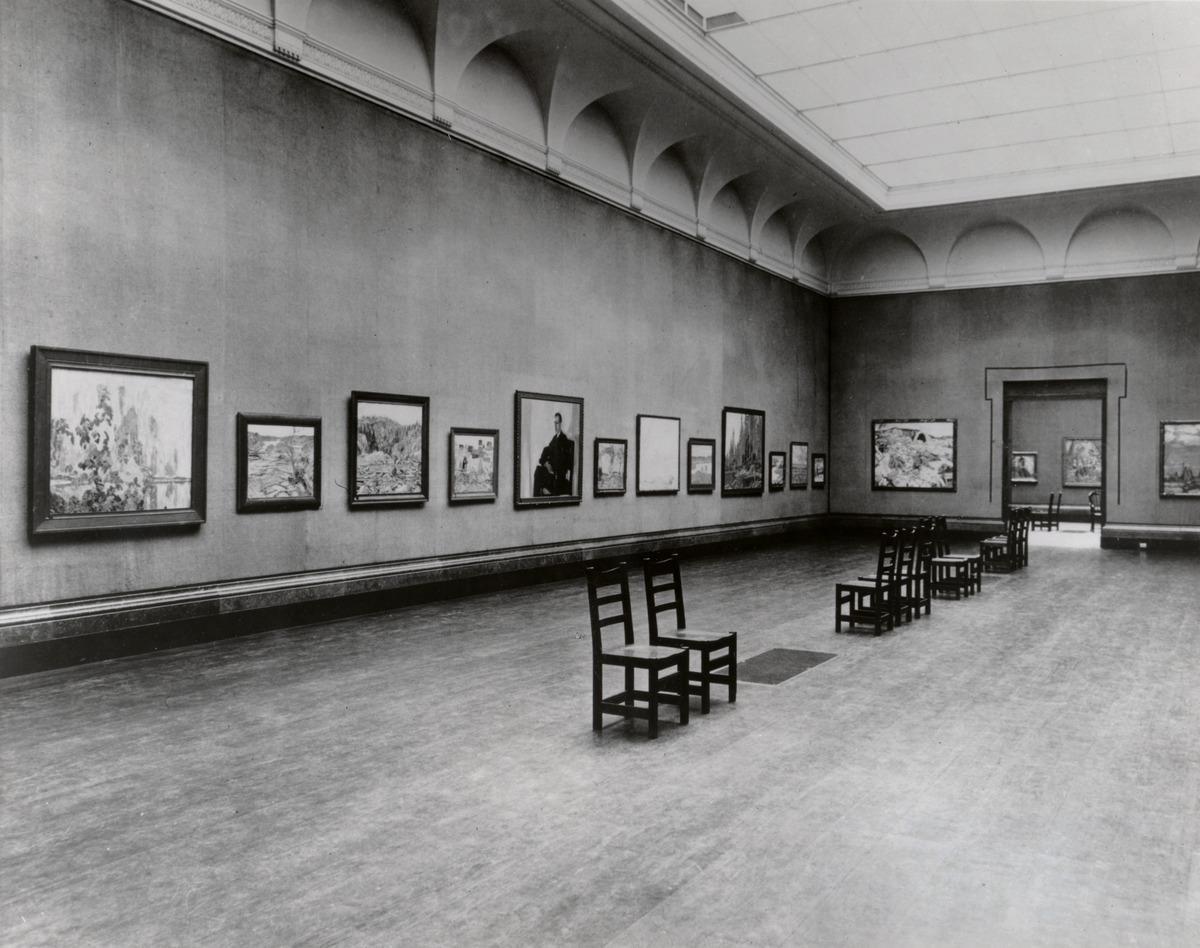
Group of Seven Exhibition Catalogue, May 1920, Art Gallery of Toronto. Edward P. Taylor Library & Archives, Art Gallery of Ontario. Photo © AGO.
Part of the Landscape of Canadian Art History
The AGO has been home to many first exhibitions of Canadian artists. In May 1920, the Group of Seven held their first exhibition here. Across these three galleries, 121 works were arranged as part of the exhibition simply titled The Group of Seven, named after the association of young, Canadian landscape painters formalized by this very exhibition. Approximately 2,000 visitors would pass through the Gallery doors during the exhibition’s twenty-day run. The Group sold very few works.
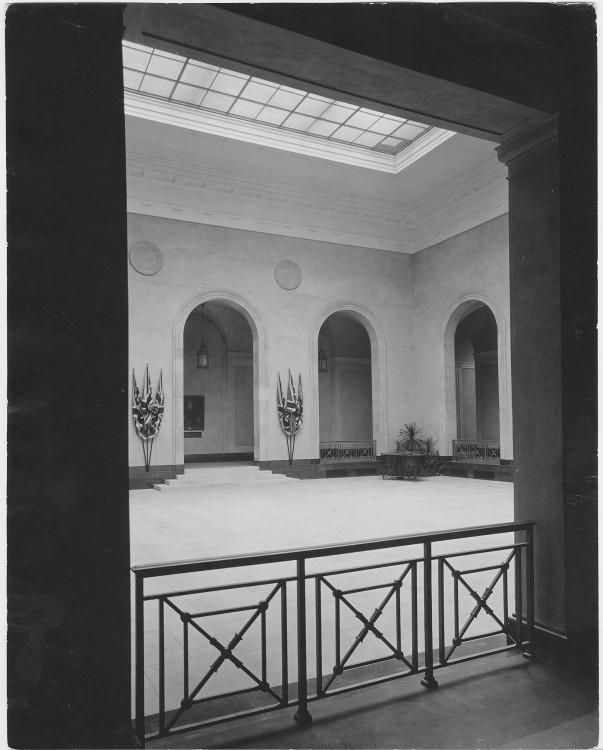
Completed Walker Court showing portrait of Sir Edmund Walker, 1926. Image courtesy of the AGO.
The Heart of the Building
A work of art in its own right, Walker Court is the central meeting place of the AGO. It contains a glass ceiling, slate floors and a view of Frank Gehry’s iconic spiral staircase. Originally conceived as a room for displaying sculptures, it has hosted ballroom dances, art installations, workshops, live performances, events, weddings and more throughout the decades.
Did you know that Walker Court is named after Sir Edmund Walker? Walker, a banker and philanthropist, was a member of the new Council of the Art Gallery as well as the first president of the museum, a position he held until his death in 1924.
On January 29, 1926, two years after Walker’s death, the Sir Edmund Walker Memorial Court and its adjoining galleries – the Richard Berry Fudger Memorial Gallery and the Fudger Rotunda – were opened. The opening of Walker Court and the galleries allowed the building to double in size. The AGO is embarking on its seventh expansion since the museum was founded in 1900 with the Dani Reiss Modern and Contemporary Gallery.
Community Spirit
In 1959, Toronto came together to help crowdfund an incredible masterpiece by Jacopo Tintoretto. Christ Washing the Disciples' Feet is a large-scale oil painting on canvas, made between 1545 and 1555. It depicts a Bible passage from John 13, describing how Christ washes the feet of his disciples before the Last Supper.
When the Tintoretto was for sale, the Art Gallery of Toronto (now the AGO) came up with an out-of-the-box idea: while the real Tintoretto hung on the Gallery walls, a full-size reproduction of the painting was hung in front of it, covered by one-inch squares of white paper. The Gallery then sold one square inch to supporters, visitors and members of the public for $10 each. As contributions came rolling in, the paper squares were removed to reveal the reproduction. Once all the squares were purchased and the masterpiece fully revealed, the Gallery had officially raised enough money to buy the painting. More recently, the generosity of Torontonians also helped the AGO with the recent acquisition of Yayoi Kusama’s INFINITY MIRRORED ROOM: LET’S SURVIVE FOREVER.
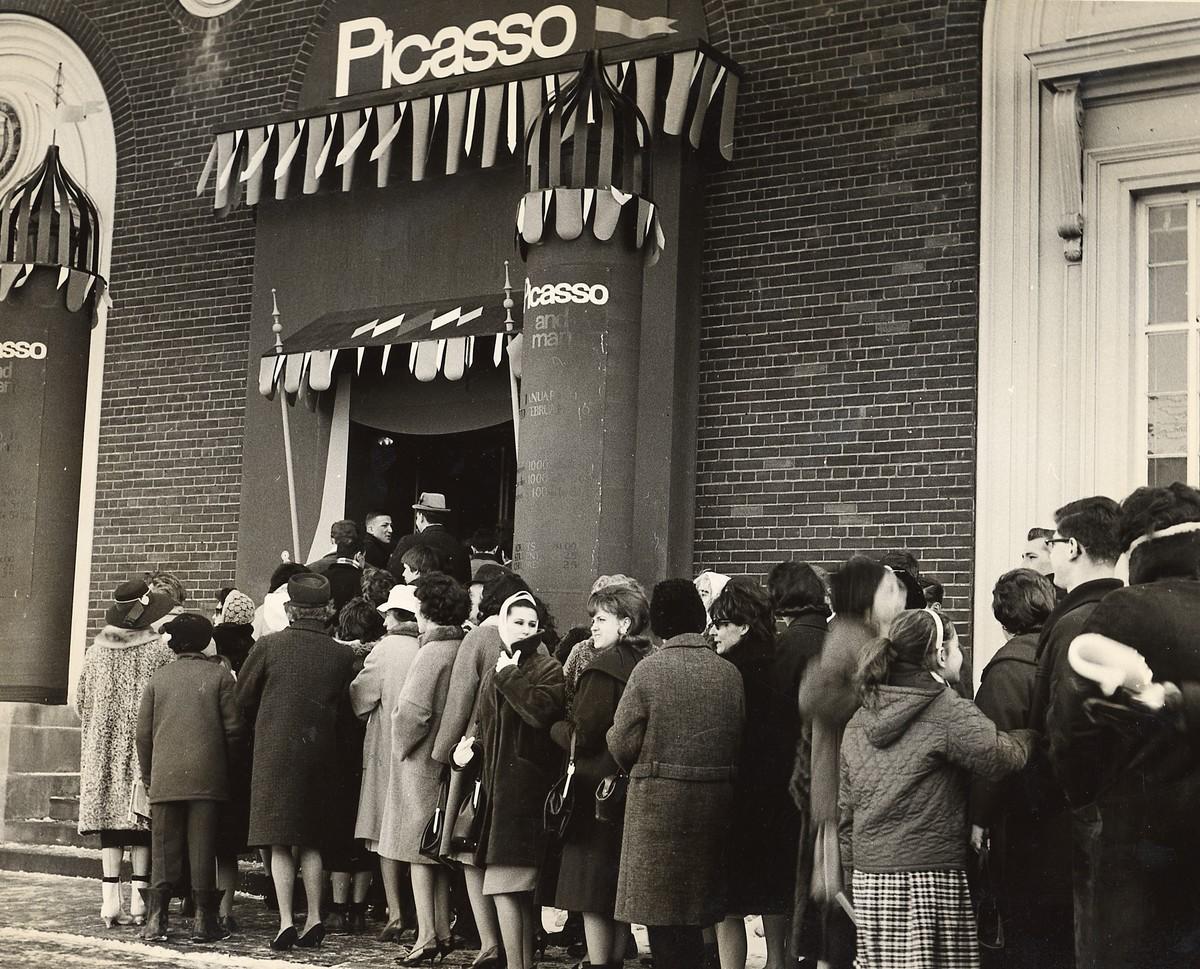
Visitors outside Gallery entrance (taken on the last Sunday of the exhibition), Picasso and Man: The 1964 Exhibition. Art Gallery of Ontario. Photo © AGO.
Picasso Was Here First (in Canada)
In 1964, the AGO thrilled audiences with Canada's first-ever retrospective of Pablo Picasso’s work. This month-long visual spectacle featured 270 artworks from around the world and was visited by a staggering 107, 214 visitors.
Visit the full timeline at ago.ca/125 to learn more.
